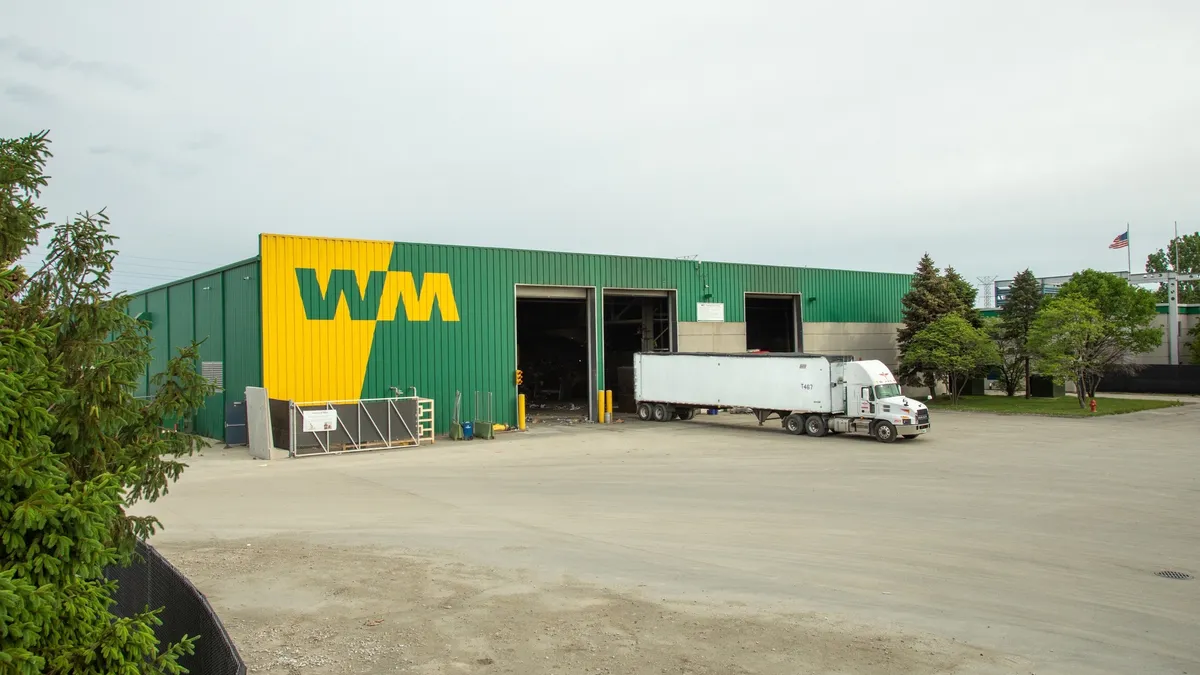Dive Brief:
- WM and Dow are partnering on a new curbside film recycling pilot program in the Chicago suburb of Hickory Hills, Illinois, which has about 3,500 households. Residents can put films including bread bags, cling wrap and dry-cleaning bags in their curbside recycling bins, and WM will process the material at its nearby, three-year-old “MRF of the Future.”
- WM will use the knowledge it gains from this pilot — including about material quality, processing and end markets — to inform plans for curbside film recycling pilot programs in other regions, said Brent Bell, WM’s vice president of recycling. WM expects its film recycling program to reach 8% of customers by 2025.
- A deal announced in September for WM to acquire a controlling stake in plastic recycler Avangard Innovative should close soon, Bell said, and that could be an opportunity for the collected film at some point.
Dive Insight:
The motivation for this project is to increase plastics recycling, especially for materials like film with low recycling rates. Film typically is explicitly excluded from curbside programs, and WM’s pilot is one of industry’s first. Bell says the curbside film program will improve economics both for WM and its partner municipalities because plastics commonly accepted curbside currently only make up about 5% of the materials stream, but they represent 30-40% of the value in the stream.
“We’re seeing demand increase for all plastic grades, and we started thinking, how can we properly get this low-recycling-rate product... to some end markets?” Bell said. “We see a big opportunity to increase the recycling rate of plastics.”
WM plans to invest $800 million in new and upgraded equipment at its facilities through 2025 so it can accept and correctly process different types of materials, including film, Bell said. The 150,000-square-foot Chicago-area MRF was on the front of the investment wave and is considered a model and test site for what is possible at other facilities. It’s highly automated, which reduces the ever-present struggle to staff MRFs, allows for higher quality throughput and nearly doubles the processing capacity of traditional MRFs, Bell said. The Chicago facility’s capacity is about 250,000 tons per year.
“Our Chicago facility is one of the largest and most automated facilities we have in our network — it’s kind of our next-generation MRF,” Bell said. “There could be other [materials] in the future that with our investments we’re able to unlock.”
WM is testing both new and proven film-collection technologies at its MRFs. The current process uses suction to remove film from the line. But other lightweight materials, like paper, also can get sucked up. Therefore, the second step is to separate fiber from film, and the last step is to bale the film. New technologies being tested at other WM MRFs could prove to be more efficient.
Identifying viable film end markets and the material quality necessary to meet that demand is a key learning WM hopes to achieve with this pilot project. While Avangard is considered a top option, the company currently accepts cleaner, higher-grade film than MRF film. WM is investigating steps to improve MRF film quality.
Project partner Dow is another possibility and has been instrumental in helping WM identify end markets and material quality requirements, Bell said. Dow already purchases Avangard’s plastic pellets made from recycled film, so they’ll be a direct WM customer once the Avangard acquisition is completed.
WM also hopes to learn what kind of education tactics work best to inform customers of new materials in the stream and how to correctly recycle them. It distributed brochures with detailed pictures of accepted films to participants in the Illinois pilot and continues to engage with them to figure out which program aspects are working and which aren’t.










